You see it practiced in studios, mentioned in scrolls, and commemorated in sunrise rituals around the world. But have you ever wondered where yoga truly began?
Well, the origin point from which breath, stillness, and spirit first aligned is Indian yoga.
What began as a path of self-mastery in ancient times in South Asia now touches lives across continents, one steady movement at a time. It was practiced long before it was named to differentiate it from its Western versions and sung in sacred verse long before it became a lifestyle shtick.
What is Indian yoga?
Indian yoga is a holistic system that combines physical, mental, and spiritual practices into one discipline rooted in direct experience. The goal? Self-liberation, or moksha.
It began with the Vedas, India’s oldest sacred texts, composed over 3,000 years ago. These scriptures carry hymns, mantras, and insights into life, death, energy, and consciousness. The teachings were transmitted through sound, memory, and ritual.
Centuries later, those same teachings were refined in the Yoga Sutras of Patanjali, a classical text written around 2,000 years ago that defines the psychological and spiritual framework of yoga. This text organizes the practice into eight cornerstones with unique purposes, or “limbs”:
- Yamas: How you walk in the world,
- Niyamas: How you lead yourself,
- Asana: What steadies your form into stillness,
- Pranayama: Life force, directed with precision,
- Pratyahara: Withdrawal without escape,
- Dharana: Focus training,
- Dhyana: Uninterrupted meditation, and
- Samadhi: Union beyond separation.
Each limb trains a different layer of your being and feeds the next. Think of them as patterns of inner harmony informing integrated living.
Entrepreneur, yoga expert, and Mindvalley trainer Cecilia Sardeo, for one, lived this integration. “Yoga trains your awareness around thought patterns or emotional triggers,” she shares in her program, The Mindvalley Yoga Quest.
The sharp perception, she adds, helps you make choices that are true to you, day to day. And this awareness takes time to build, which is why, in yoga, you’re encouraged to sit in discomfort and breathe into the tension that arises mid-pose.
It’s straightforward, yes. But the repetition, in effect, builds your mental capacity to stay with yourself, listen to your body, and lead it, even when it’s inconvenient to.
As Cecilia puts it, yoga, in essence and as the Vedas intended, “synchronizes and harmonizes all four dimensions: the emotional, physical, mental, and spiritual.”
7 types of Indian yoga
Indian yoga is a constellation, not a single path. Each style, or “school,” offers its own rhythm.
“Every practice has a different impact on the nervous system,” reminds Cecilia. “Hatha is grounding. Kundalini activates. Ashtanga burns through you.”
But one thing’s for sure: All of them aim to wake you up from within.
Here are the core types still practiced today:
1. Hatha yoga: Where movement begins
This is the style most people start with, and for good reason.
Hatha yoga lays the groundwork for a good yoga practice. It teaches you to hold a pose, lengthen your breath, and stay with the bodily discomfort that shows up.
Sure, it’s slow-paced, but don’t mistake that for “easy mode.” The truth is, Hatha builds real strength because it’s built on discipline. And over time, it sharpens the awareness you need to go deeper into any yoga path.
Yoga was never meant to be about performance,” Cecilia points out. “It’s about presence.”
Best for: Grounding into the body and learning the basics.
2. Raja yoga: The mind-training “manual”
Raja yoga exclusively follows the eight-limbed system from the Yoga Sutras. So, it’s less about doing poses and more about training your mind to stay still, centered, and alert.
The main point of this approach is building an unshakeable internal compass. This way, you can pause before you react, stay present with your emotional discomfort, and see things even when it’s messy.
In practice, this path includes daily seated meditation (dhyana), focused concentration (dharana), breath control (pranayama), and study of yamas and niyamas. They are, in essence, the ethical “roots” that shape how you live.
The body still plays a role here, but it serves a different purpose. As Cecilia emphasizes, it “becomes a vehicle, not the goal.”
Best for: Developing discipline, internal focus, and mental clarity.
3. Jnana yoga: A quest for thinking deeper
This is yoga for truth-seekers. Jnana means “knowledge,” but not the kind you memorize. It’s about piercing through false beliefs—cultural, personal, emotional—and asking yourself the hard questions, like:
- “Who am I beneath all my roles and labels?”
- “What beliefs am I carrying that don’t belong to me?”
- “What is awareness, and who’s the one noticing it?”
No elaborate mat sequence here. Only a clear mind is needed, as well as your willingness to investigate the stories you’ve been telling yourself.
The work here looks like self-inquiry, meditation, and guided contemplation of spiritual texts, particularly the Upanishads. In action, you get to reflect, write, question, and sometimes engage in deep dialogue with a teacher when in Jnana mode.
Best for: Seekers who want to grow through self-study.
4. Bhakti yoga: How to lead with your heart
This one runs on devotion and building a relationship with something beyond yourself, like the divine, love, or connection with others. Whatever you do in this approach, you do it to tune your emotions into practice.
Day to day, practicing bhakti can comprise of:
- Kirtan: Chanting,
- Japa: Mantra repetition,
- Puja: Ritual offerings, or
- Seva: Acts of service.
You can perform these actions solo or in a group. Either way, it’s a felt path.
And the ultimate goal when practicing Bhakti yoga? Spiritual transcendence—not by escaping the world, but by softening into it, heart first.
Best for: People who feel their way through life and want their spirituality to feel personal.
5. Karma yoga: turn your life into practice
This form of Indian yoga is all about conscious action. It’s all in the name: karma means “action” in Sanskrit, so the deeds that you do are the focal point here.
Yep, you don’t sit still or hold a pose. This approach is rather about serving others and showing up without needing applause. The goal is to dissolve the ego through selfless work, like volunteering, mentoring, caregiving, or simply doing what needs to be done.
And here’s the catch: you’re not chasing credit. You stay present, but you drop the need for validation. That’s how you turn action into awareness and avoid performative activism.
Best for: People who want their daily work to be an offering.
6. Tantra yoga: Where energy meets awareness
Despite what clickbait headlines would tell you out there, tantra is far more than just about sex. It’s a system for waking up to your full energetic potential physically, emotionally, mentally, and spiritually.
This path trains you to tune into your senses and track the subtle shifts happening inside you. The main focus is to expand your capacity to feel deeply.
That sensitivity, in turn, becomes a doorway to deeper self-awareness through modalities like mindful breathing, sound healing, mantras, creative visualization, and even sacred geometry symbols.
Best for: People drawn to energy healing work, rituals, and embodied awareness.
7. Kundalini yoga: Wake the energy up
At the base of your spine, there’s a powerful energy called kundalini that’s been lying low. This practice is all about “waking it up” and guiding it through the body, which is a process known as the kundalini awakening.
This type of Indian yoga combines movement, breathwork (like breath of fire), mantras, chanting, and sharp mental focus. Every sequence, or kriya, is designed to trigger specific energetic effects that clear your blocks, boost your vitality, and sharpen your intuition.
But a quick heads-up from Cecilia: Kundalini yoga is not something you should dive into casually. You need to prepare for it physically, mentally, and emotionally, as it can stir up intense physical sensations and emotions like old grief, buried trauma, and sudden waves of memories.
So, it can be dangerous if you don’t handle it properly under the eyes of a trained guru. Symptoms of psychosis, like extreme confusion, hallucinations, and detachment from reality, have been linked to unsupervised kundalini practices.
“That’s why you need to integrate it with grounding practice like Hatha,” she advises.
Best for: Energetically sensitive seekers who are curious about spiritual evolution and ready for deep inner transformation under proper guidance.
10 Indian yoga poses to try today
You don’t need a 90-minute class or a retreat in Rishikesh to start practicing. Sometimes all you need is one pose, done with full presence, from the comfort of wherever you are.
Try them one at a time to see which one resonates most. Pro tip: stay a little longer in any than you’d feel like, because that’s how you can deepen your awareness.
1. Sukhasana (lotus pose)
This one lives up to its name once you’ve eased into position. But here’s the thing: simple as it is, the real breakthrough it provides happens while you sit.
Use it as a chance to observe your thoughts, slow your breath, or simply notice your body.
How to do it: Sit cross-legged, spine tall, shoulders relaxed.
What it teaches: Stillness, observation, and breath awareness.
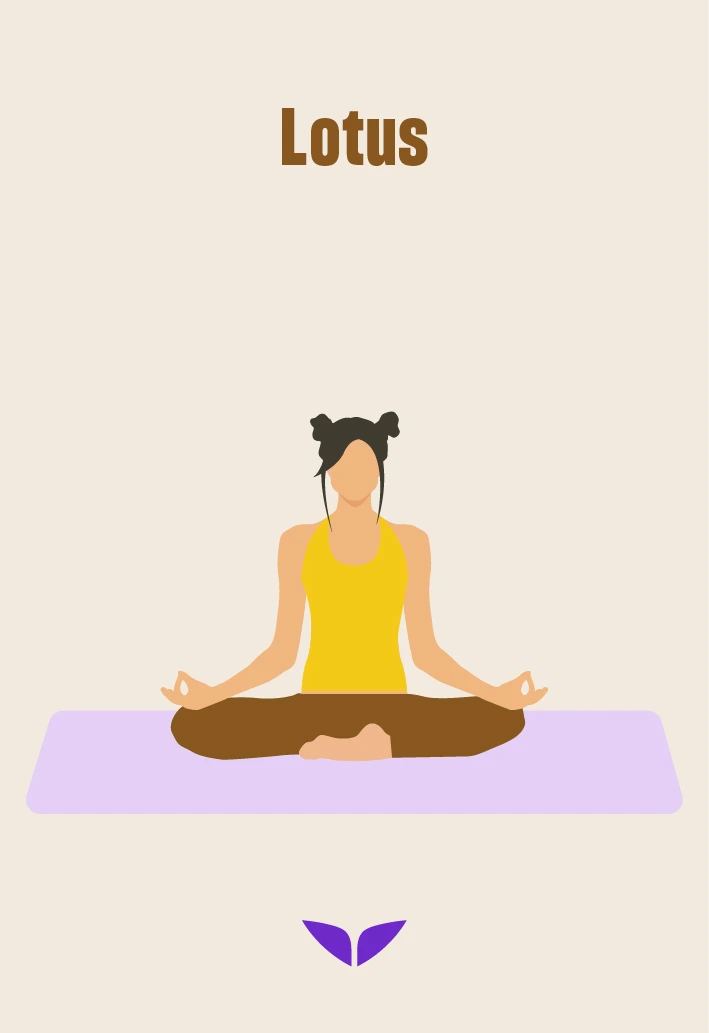
2. Balasana (child’s pose)
It’s the pose you return to when you need a moment to be safe or when your mind feels cluttered. It’s quiet, easy to perform, and always accessible.
How to do it: Kneel on the mat, big toes touching, knees apart. Fold forward, arms stretched out or resting by your sides. Let your forehead melt into the mat.
What it teaches: Surrender, rest, and emotional reset.
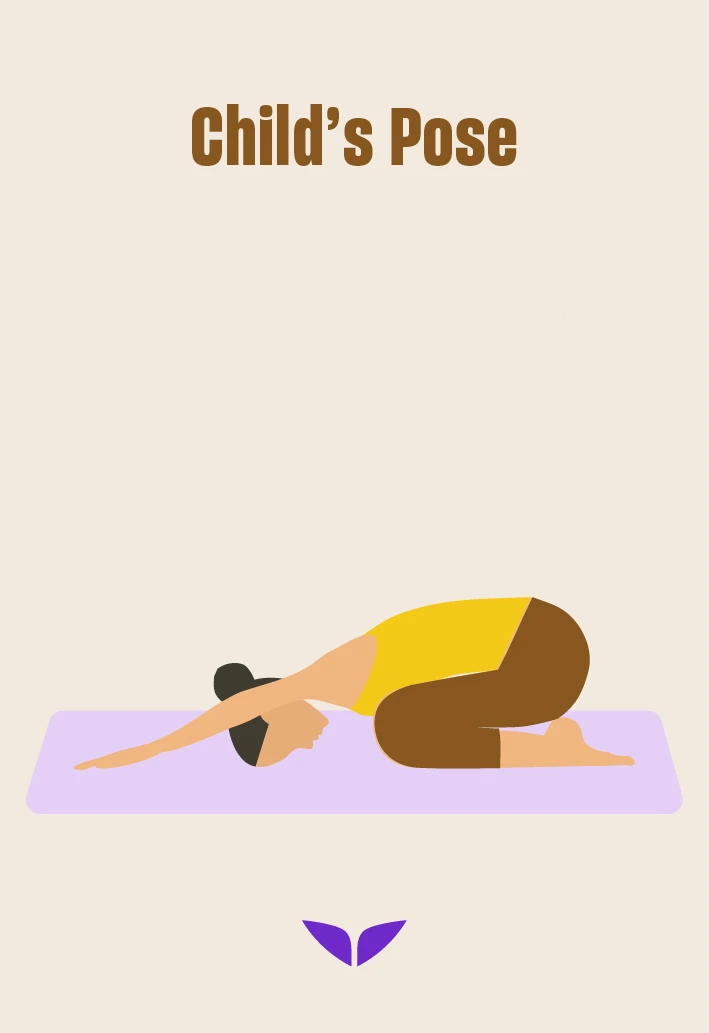
3. Bhujangasana (cobra pose)
This one opens the heart… literally and emotionally. It’s a small backbend that teaches big lessons in expansion without force.
How to do it: Lie on your stomach, palms under shoulders, elbows hugging in. On an inhale, press into your hands and lift your chest, keeping your pelvis grounded. Then, gaze forward or slightly up.
What it teaches: Openness, courage, and gentle strength.
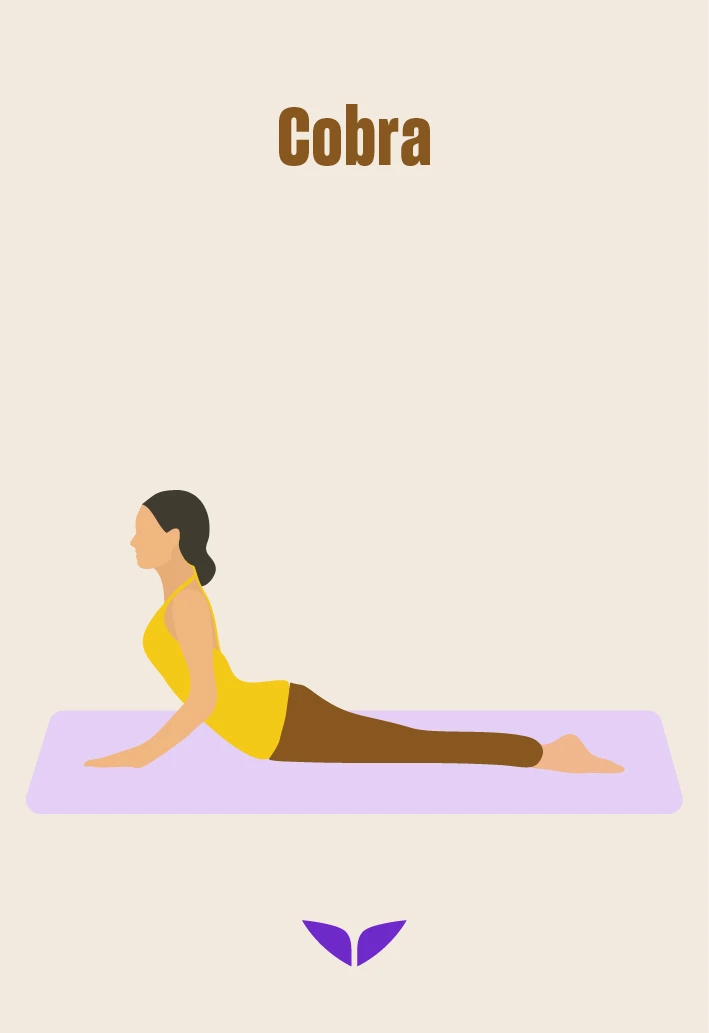
4. Vrikshasana (tree pose)
This pose anchors you into the present. It steadies your focus, teaches patience, and reminds you that balance comes from your core, not your conditions.
How to do it: Stand tall, shift weight to one foot, and place the sole of your other foot on the ankle, calf, or inner thigh, just not on the knee. Then bring your palms together at your heart or reach your arms up.
What it teaches: Balance, presence, and grounded concentration.
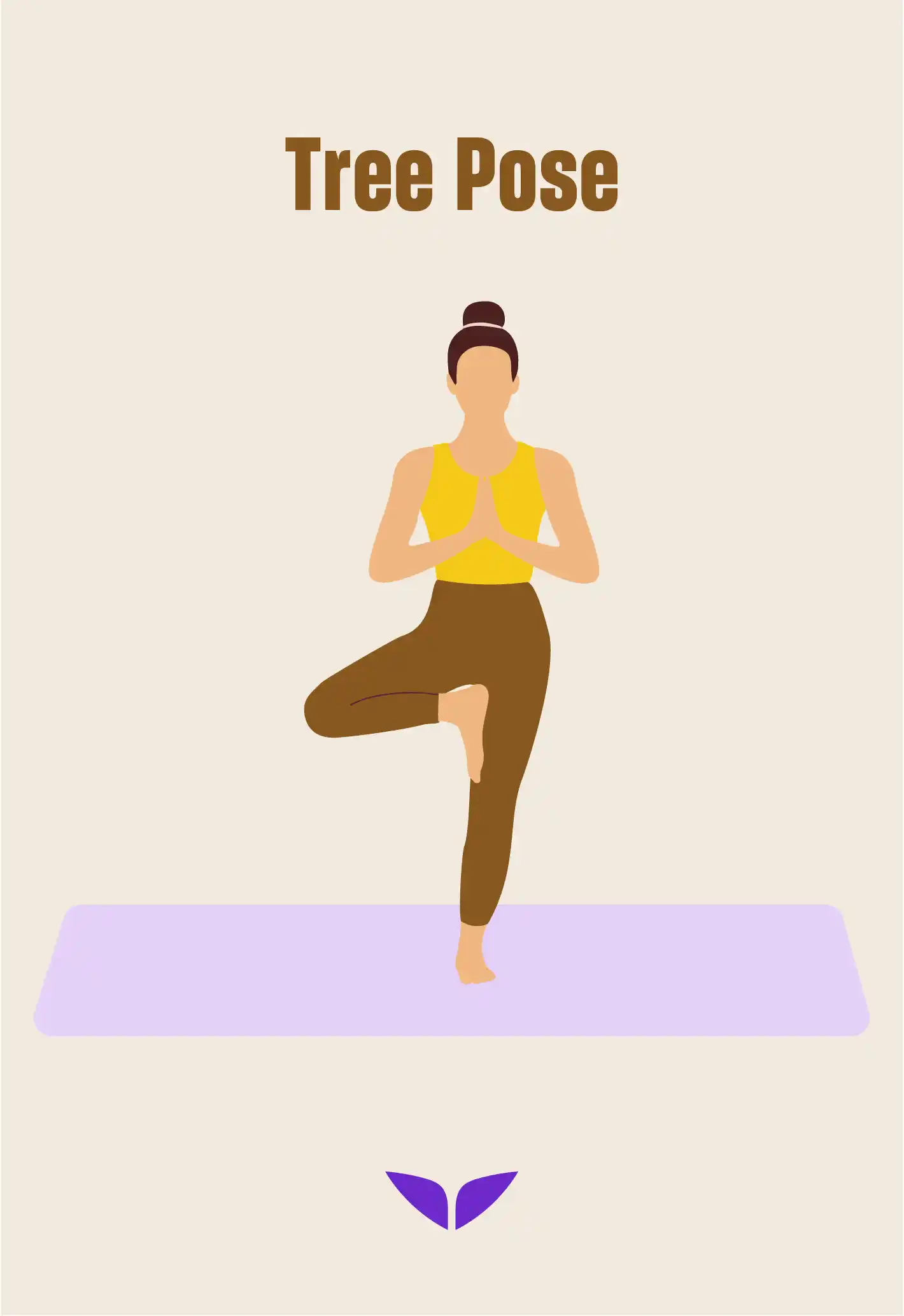
5. Navasana (boat pose)
When your core starts shaking in this pose, stay. That’s the moment your willpower kicks in. This pose builds trust in your ability to hold your center physically, emotionally, and mentally.
How to do it: Sit with knees bent and feet lifted. Extend your arms forward. To advance, straighten the legs to form a V. Keep your spine long, chest lifted.
What it teaches: Grit, core strength, and mental steadiness.

6. Tadasana (mountain pose)
This one may look like you’re standing still and nothing more. But get quiet enough, and you’ll feel your whole body recalibrating. It’s a powerful pause between effort and rest.
How to do it: Stand tall, feet together or hip-width apart. Arms by your sides, fingers active, crown of the head lifting. Root down and rise.
What it teaches: Alignment, subtle awareness, and energetic reset.
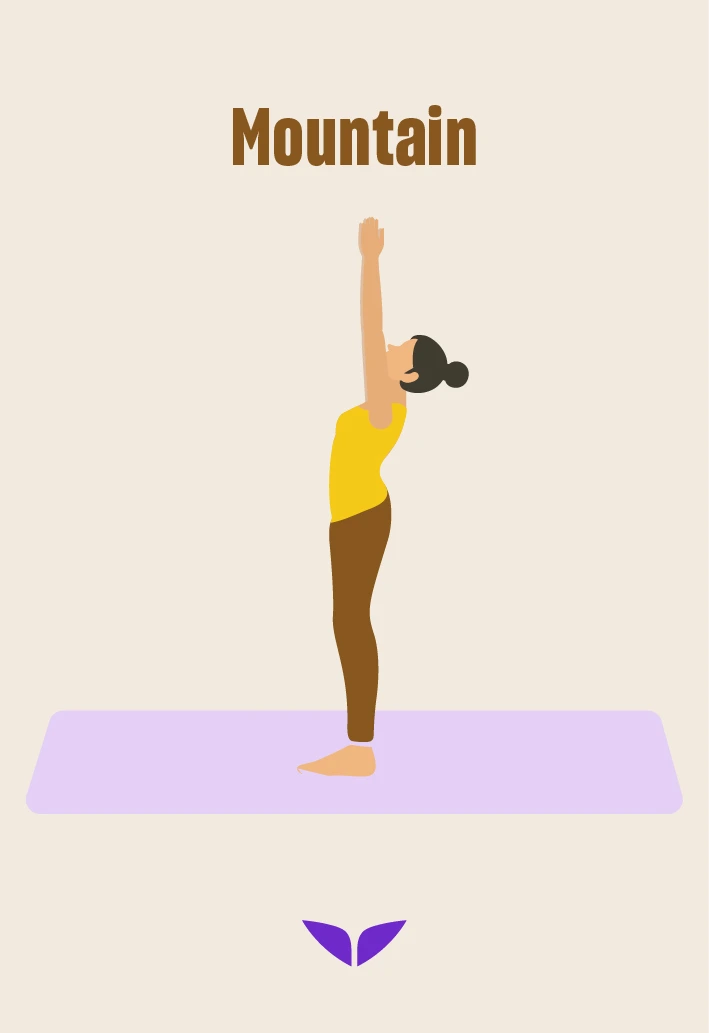
7. Ardha Matsyendrasana (seated twist)
The twists required by this pose help release tension in the spine. The emotional point of it all? To build up your resilience so you can “digest” life’s unexpected forks.
How to do it: Sit tall, cross your right foot over the left thigh, and twist to the right. Place your right hand behind you and hook the left elbow outside your knee. Repeat on the other side.
What it teaches: Spinal mobility, detoxification, and mental release.
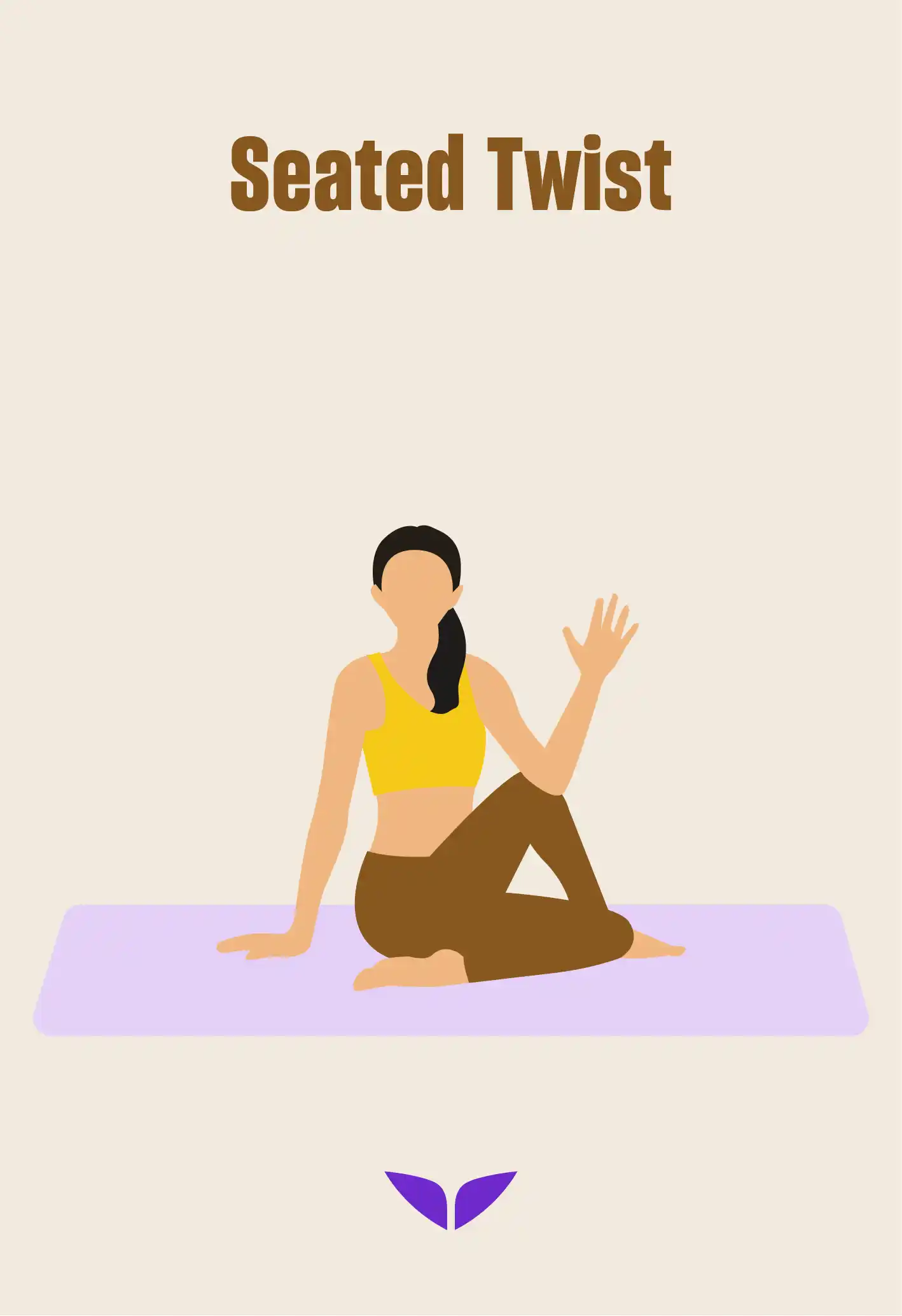
8. Utkatasana (chair pose)
The burning sensation created by this one is fast. You’ll want to quit mid-pose, but don’t. That pause at the edge of discomfort? That’s where self-mastery begins.
How to do it: Stand with your feet together, bend your knees, and sink your hips as if sitting in a chair. Arms reach overhead, biceps by ears.
What it teaches: Endurance, strength, and staying through the burn.

9. Viparita Karani (legs up the wall)
This is your nervous system’s reset button. It slows your pulse, calms your thoughts, and gently brings you back to your breath.
How to do it: Lie on your back with your legs resting vertically up a wall. Scoot close enough so your hips touch or nearly touch the wall. Arms rest by your sides.
What it teaches: Restoration, blood flow, and deep calmness.
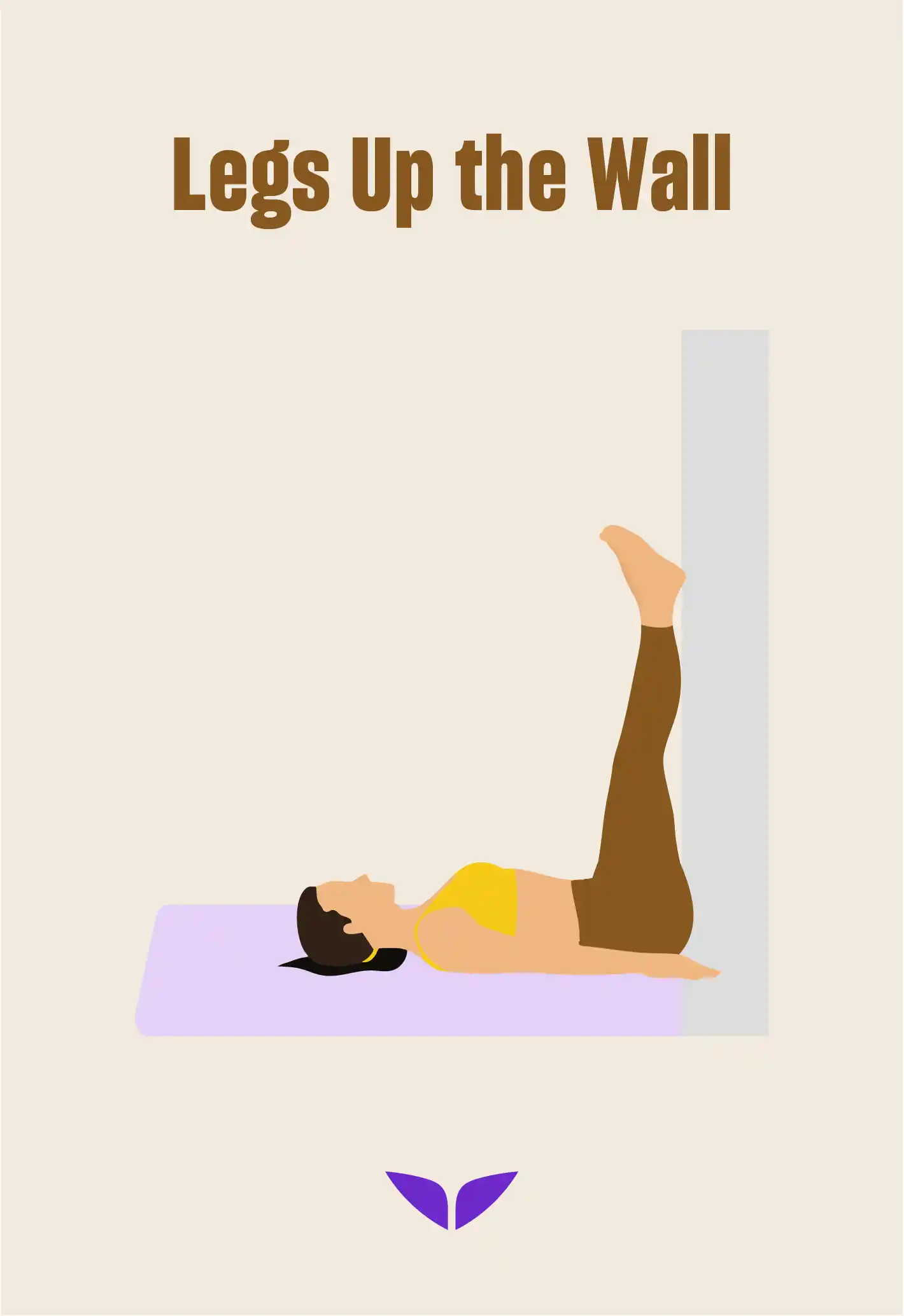
10. Savasana (corpse pose)
This is where your daily practice settles down—in active rest.
In this pose, your only job is to be fully still yet aware. It gives your muscles a chance to relax fully, your heart rate to slow down, and your nervous system to shift into rest mode after sequences of movement.
How to do it: Lie on your back, legs extended, arms at your sides, palms facing up. Close your eyes. Let your body soften and your breath return to its natural rhythm.
What it teaches: Release, receptivity, and presence without effort.
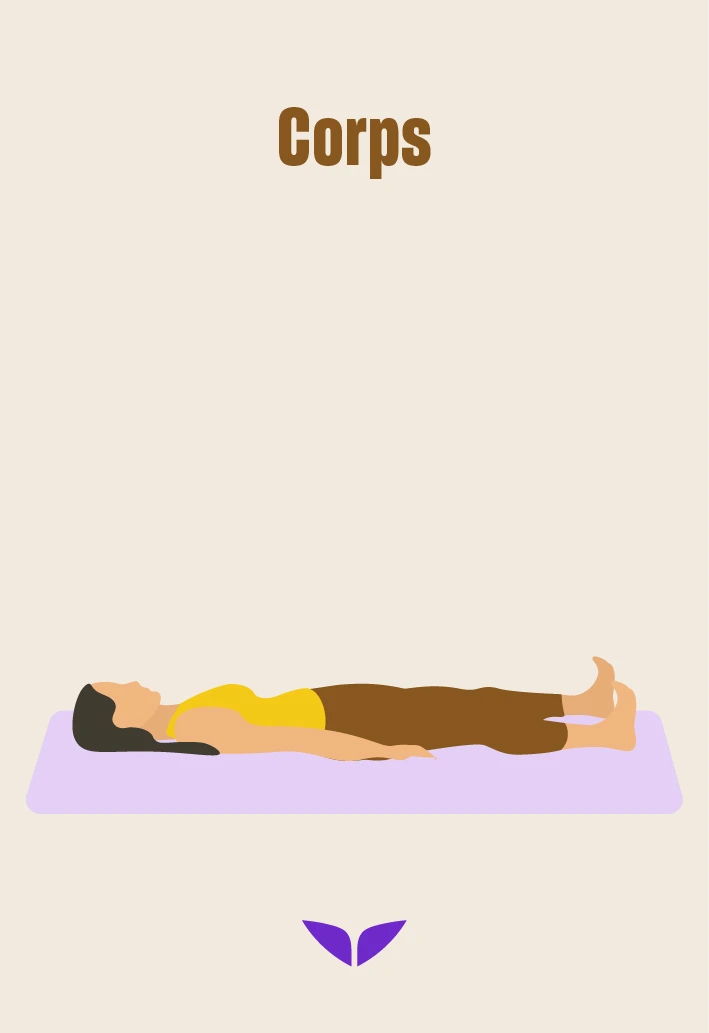
Indian yoga vs. American yoga: 7 key differences
Today, millions of people unroll a mat, stretch their bodies, and leave class calling it “yoga.” And they’re not wrong. But chances are, the form they’re practicing is American yoga.
So, if you’ve ever wondered, “Is yoga Indian?” The short answer is yes.
Amy White, the founder of The White Editorial and the former editor-in-chief of Mindvalley Pulse, would know. Cinched under her belt is intensive training at a traditional vegan ashram in Sri Lanka. In her words, yoga in its true form is “a path to union—of body, mind, and spirit.” Not to be boxed in as just a “fitness regimen,” it is a way of living.
“There was a ritual to it,” she adds. “None of this hot-pod-lulu-lemon-instagram culture. I remember waking up at 5 a.m. to meditate with my teacher and feeling like I was part of something ancient.”
But over the next century, traditional yoga practices began shifting once they were brought over to the West. First by translation, then by trend, eventually becoming the fitness-forward holistic wellness approach it is today.
And the whole practice boomed. According to the CDC’s National Health Interview Survey, approximately 34 million U.S. adults practiced yoga in 2022 alone. Not bad for a practice that began as a small countercultural movement in the 1960s.
Of course, with the growth comes divergence from its point of origin. While Indian yoga emerged as a path to spiritual liberation, American yoga shaped itself around lifestyle, health, and personal development.
Their key differences also show up in how the practice is taught, what it prioritizes, and why it’s done, in various ways.
Indian yoga vs. American yoga: A quick look
| Aspect | Indian yoga | American yoga |
| Transmission | Passed from teacher to student through breath, presence, and lived experience. | Taught through 200- or 500-hour certifications in studios and structured training. |
| The teacher’s role | The guru is a spiritual guide responsible for long-term personal growth. | The instructor is a trained facilitator guiding classes, often within a commercial setting. |
| Practice space | Held in ashrams—simple, quiet, and nature-connected, designed for immersive discipline. | Conducted in commercial studios or adaptable spaces like parks or rooftops, designed for accessibility and ambiance. |
| Structure and format | Based on the eight-limbed path of the Yoga Sutras, integrating all layers of the self. | Structured like a fitness class with warm-up, peak, and cool-down flows. |
| Lifestyle integration | Woven into daily life, including how one eats, speaks, breathes, and relates. | Integrated into routines as scheduled classes, often treated as time-bound wellness sessions. |
| Philosophical focus | Inner study, ethics, breathwork, mantras, and energy systems alongside movement. | Physical training, posture, flexibility, and strength with optional mental components. |
| Practice styles | Follows classical lineages such as Hatha, Kundalini, Ashtanga, and Kriya—each with its own rhythm and depth. | Embraces modern styles like Vinyasa, power yoga, or hybrid blends focused on accessibility and fitness goals. |
Now, here’s a deeper dive into the main differences between these two yoga approaches:
1. How the practice is passed down
Indian yoga lives in relationships. It’s passed from teacher to student, breath to breath, across time. The scriptures may have laid the foundation, but the teacher-student connection it’s the teacher-student connection that carries the teachings forward. Learning happens through presence, repetition, and deep personal guidance.
Meanwhile, American yoga is passed through structured training. Most teachers complete 200- or 500-hour certification programs that unfold over weeks or months. Knowledge moves through studios, modules, and instructor courses. The format supports clarity, reach, and consistency across teaching environments.
On her experience in Sri Lanka, Amy shares, “You bow to your teacher, and you trust their pace, even if it’s uncomfortable.” In contrast, she notes, the West tends to favor a more casual, collaborative model, “which can be empowering but sometimes lacks depth or consistency.”
2. “Guru” vs. “instructor”
In Indian yoga, the guru—Sanskrit for “one who dispels darkness”—holds more than knowledge. They are ultimately responsible for their students’ personal growth.
And when a teacher-student relationship bond forms, often over time, the student commits to a way of life under their teacher’s guidance, often beyond the mat. “You’re not learning from a guru,” Cecilia explains. “You’re learning from life itself, through the lens of your teacher.”
And the teacher is a revered role. “In India, being called a yogi is a deeply earned title, often reserved for those who have dedicated their entire lives to spiritual practice and renunciation,” Amy shares. “It’s not something you call yourself lightly, and definitely not a term to use as a brand or persona.”
The whole thing looks a little different in the modern West.
Instead of a “guru,” you have an instructor, a.k.a,. a trained yoga professional who leads commercial mindful yoga classes for groups of people (although there are those who teach private lessons, too).
Task-wise, they prepare and explain yoga sequences, offer in-class postural adjustments, and hold the space for a safe practice. The teacher-student relationship is there, yes, but it tends to be confined within the walls of a class.
3. One’s held in ashrams, the other in commercial studios
An ashram is a place to live the teachings as well as practice yoga.
In Indian yoga, the space itself is part of the discipline. It’s quiet, stripped down to support only bare necessities, and often surrounded by nature.
Amy describes her experience in Sri Lanka as a sacred reset. Each day began before sunrise with meditation, basic vegan meals, and the letting go of everyday distractions. “It’s like a sacred pause from the outside world,” she recalls. “I remember feeling stripped bare, like all my hurts came up to be seen. But there’s such beauty in that rhythm. It’s like I returned to myself.”
In contrast, American yoga is often held in studios built to groom technical flow. They tend to take place in these commercial spaces with polished floors, gentle lighting, and curated sound.
But some teachers don’t feel the need for confined spaces. You can find classes in parks, rooftops, or co-working spaces—wherever people can move, breathe, and show up.
What’s clear with modern yoga environments is that they’re made to hold attention and welcome anyone through the door. “The West has done a great job of making yoga inclusive and varied. There’s something for everyone,” Amy adds, emphasizing that some yoga is better than none.
4. Spiritual system vs. class format
The structure of the Indian yoga experience follows a system that’s mapped out to fulfill the eight “limbs” explained in the Yoga Sutras of Patanjali.
Each session, based on a “limb,” trains a different layer of the self, including how you live, how you breathe, the way you focus, and the quality of your presence. And postures, while important, are just one part of the whole equation. The real kicker is in your daily conduct and how much self-awareness you ultimately cultivate.
As Cecilia frames it, “The real yoga begins the moment you want to come out of the pose.”
Now, the format for American yoga is the stark opposite: it’s all about being in class.
There’s a warm-up, a peak, and a cool-down. Some classes follow a set sequence, while others rotate yogic themes and asana styles. The structural versatility helps students stay consistent and engaged while giving teachers room to adapt their teaching styles.
5. One shapes daily life, the other fits into it
Indian yoga isn’t a “once a day” type of practice. It’s a whole way of life that covers how you move, eat, speak, breathe, rest, and relate to people throughout your day.
From morning yoga routines to the yamas and niyamas, the entire practice weaves itself into the rhythms of life. So, your mat isn’t the “center” of your practice. It is, as Cecilia points out, “a training ground for the rest of your life.”
Now, with American yoga, a practice is considered great when it seamlessly fits your schedule. Just think back to how people tend to refer to it in your life: it’s often part of a morning routine, or a lunch break reset, or even a post-work release.
For many, the benefits of these sessions stay with them throughout the day. For others, the practice ends when class does. Either way, a session is more or less a container for “time off” before they return to their daily routines.
6. Inner study vs. physical training
If there’s only one phrase to capture the difference between Indian and American yoga, it’s “intent versus outcome.”
A traditional student in India doesn’t just move through poses; they study the mechanics of each thoroughly. The philosophy behind the practice is part of the practice.
And ancient texts, mantras, breathwork, ethics, and energy systems all live in the curriculum. Movement, alas, is just one thread in a much larger weave.
Amy, who continues to weave the eight limbs of yoga into her daily life, puts it this way: “I try to notice my patterns, triggers, and reactions with curiosity rather than judgment. That moment of self-restraint is yoga.”
But walk into most yoga classes in the U.S., and what you’ll see and appreciate first is physical movement. Emphasis on posture—that is, your anatomy, physical strength, and flexibility—leads the class experience.
Some teachers may bring in mindset or meditation, but often as optional layers, not central pillars of the practice.
Yoga is that one thing that synchronizes and harmonizes all four dimensions of who we are: the emotional, physical, mental, and spiritual.
— Cecilia Sardeo, trainer of The Mindvalley Yoga Quest program
7. Classical vs. modern styles
In India, the practice often follows established technical paths, from Hatha and Kundalini to Ashtanga and Kriya. Each is considered a “school” carrying its rhythm, breathwork, and philosophical roots. Some move slowly; others burn hot. But all trace back to a deeper system that shapes how the body, breath, and mind interact as one.
In the West, though, most classes would teach modern styles built for fitness. Think Vinyasa, power yoga, or even mashups like sculpting yoga or hot flow.
These styles often shift quickly with the times, always prioritizing people’s accessibility to yoga, whatever it may look like in any given moment. Less tradition, more transformation that fits the body’s need—all at the pace of modern life.
Live vibrantly, naturally
“Yoga helps you connect back to the core of who you really are,” as Cecilia puts it. It’s not and has never been about stretches on a mat.
That kind of connection to your life that it represents grows through daily choices governing how you live, eat, rest, and move. And it can begin when you choose to cultivate that level of presence holistically.
The good news is, you don’t have to piece it all together alone. Mindvalley’s free holistic health and wellness resources are designed to help you live with more energy, presence, and ease.
These resources are a glimpse of what the Mindvalley membership can offer you. To date, it’s helped millions of people embrace holistically healthy living.
For fitness trainer Griffin White, it has allowed him to align his physical goals throughout his training with deeper self-awareness. Thanks to Mindvalley, he says:
I am making better decisions around my health and wellness.
Meanwhile, for Melinda Krider, a health insurance agent, the platform gave her the tools to rebuild her health from within. Through mindful nutrition, fasting, and strength training, she eased the struggles of menopause and chronic sciatica, reclaiming her energy and vitality. She shares:
I now approach life with a proactive mindset, prioritizing my health in a way that nourishes all facets of my being: the physical, mental, and emotional.
Their stories prove that the path to wholeness is already there, in front of you. Always just a move away. All that’s left to do is to embody it, one conscious choice at a time… with Mindvalley.
Welcome in.








